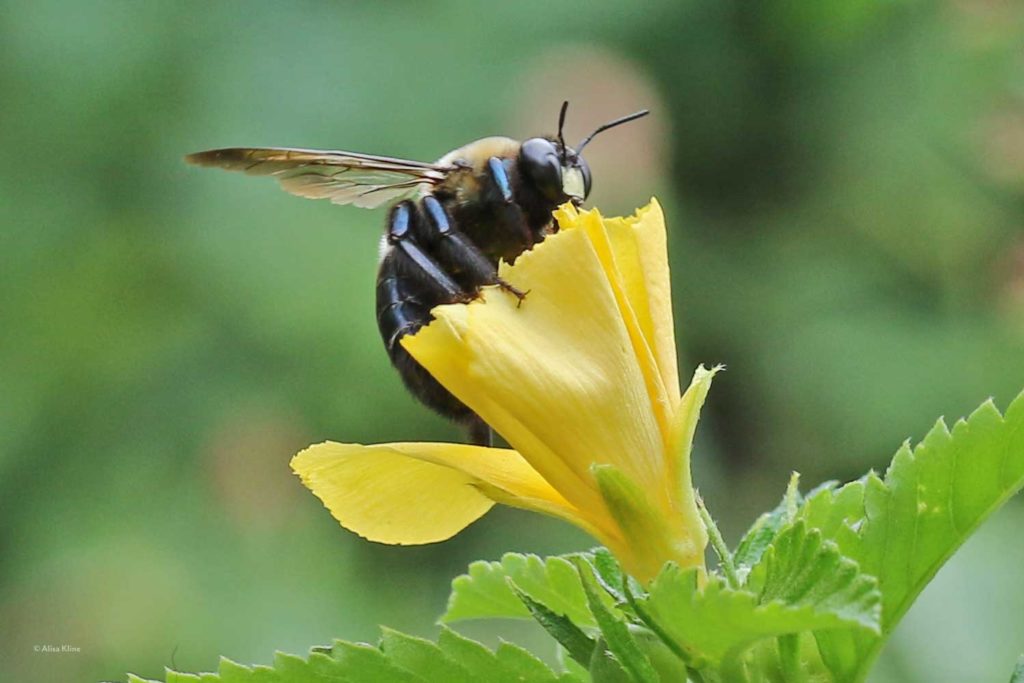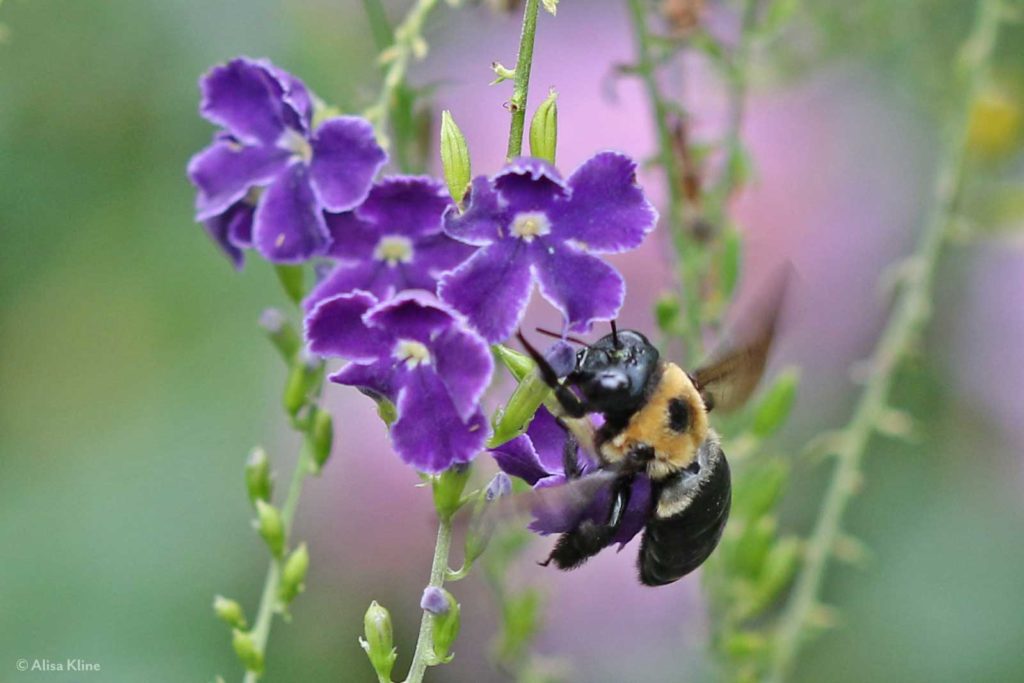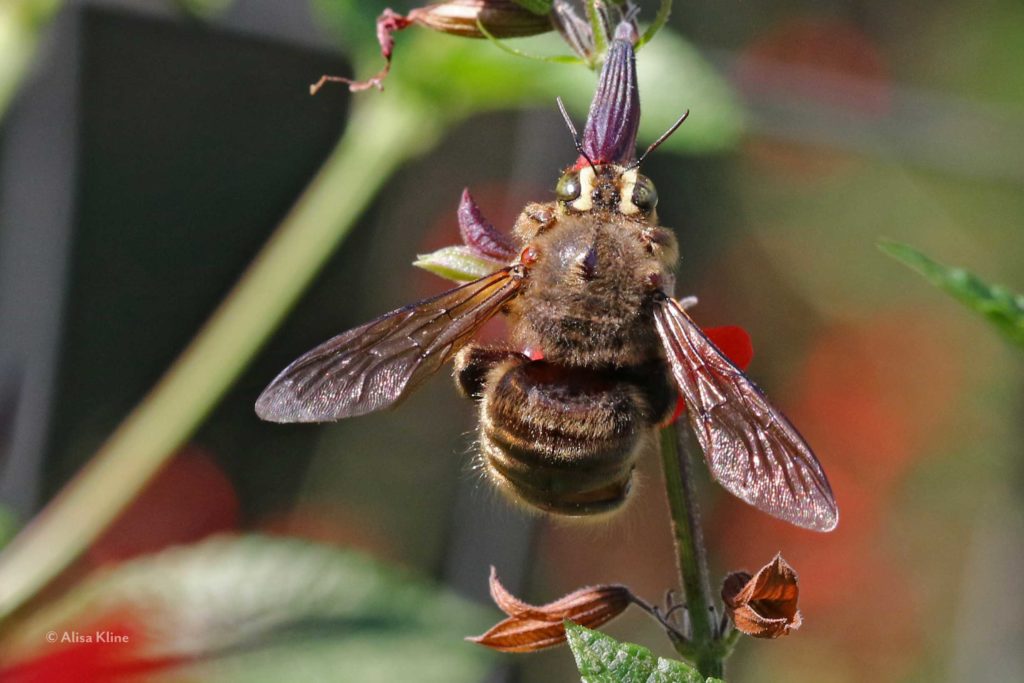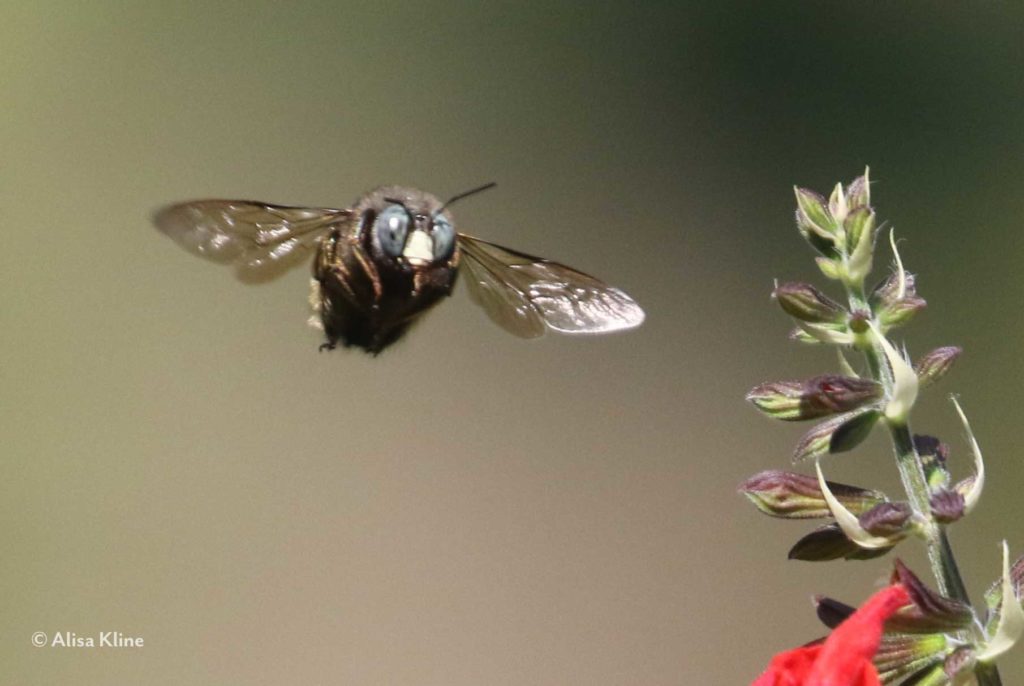Best little carpenter-bee ranch in Texas
 In my Texas fantasy, I own a small ranch in the Hill Country where I raise longhorns. In my Texas reality, I own a small private nature preserve just north of the Park and I raise carpenter bees.
In my Texas fantasy, I own a small ranch in the Hill Country where I raise longhorns. In my Texas reality, I own a small private nature preserve just north of the Park and I raise carpenter bees.
I did not set out to raise carpenter bees, but my haphazard land stewardship could stand as a guide to the care and feeding of the carpenter bee. The component the amateur carpenter bee rancher always neglects is the brush pile. We maintain an unsightly berm of branches, stumps and assorted smaller sticks piled ever higher in a far-off corner of the preserve. It is out back, near the failed experimental prairie.
I believe this berm is key to the preserve’s abundant carpenter bee population. It is also home to a whole small scurrying ecosystem. But this is about carpenter bees.
Carpenter bees nest in tunnels they dig in wood. They like softer wood if possible, branches or stumps that have started to break down. They got their name from their propensity for woodworking. They also have really strong jaws that let them bore holes in wood. These jaws are also used to slit holes in flowers too narrow for the big bees to get into. They just cut their way in and drink as they like. These holes are used by other bees who want a quick nectar pick me up without all the work. More on nectar robbing here.
The tunnel nests carpenter bees create are divided into apartments. In New York, where I grew up, we referred to this living arrangement as a railroad flat. It is a row of rooms connected one to the next, like a train. Each egg gets its own room where it can hatch and then snack on that loaf of bee bread (a combination of nectar, pollen and saliva that mom prepares and carefully places next to each egg). The new carpenter bee will stay in its apartment as it grows and transforms through its larval stages into the fuzzy pollinator we all know and love.

This is a female Eastern carpenter bee. She looks exactly like the male Eastern carpenter bee whose photo is at the top of the post except her whole face is black. He has a lovely yellow square smack in the middle. That’s the only photo I have ever taken of a male Eastern carpenter bee. I hardly ever see them.
Sometimes people try to mimic these nests with store-bought tube bundles. I imagine that people have some success with this and they do look neater, but I’m pretty sure the bees prefer stumps. They don’t need only the hole, they also need the chewed up wood that used to be the hole. When mom digs that tunnel, she mixes the wood she has chewed with her saliva to make a kind of be particle board she uses to divide her tunnel into rooms.
With many insects, it isn’t easy to tell males from females at a glance. But carpenter bees are one of the species that really flaunt their gender. And, as is so often the case, it’s the boys who get to have all the fun. Male carpenter bees have amusing markings on their faces. The females of their species can look almost identical but will lack the facial markings (note those Eastern carpenter bees above). Facial markings are so prevalent in carpenter bees and so absent elsewhere in the bee world that if you see a bee with markings on its face, it is quite likely a carpenter bee.

This fine-looking fellow is a Strand’s carpenter bee. He has racing stripes on his face. This is one of the least common carpenter bees on the preserve, although we are rather awash in them at the moment.
Perhaps they need those markings to tell for themselves who is a boy and who is a girl. It is important to get that right quickly because the boys don’t have that long to figure it out. This is true for almost all of our native bees. They are solitary. They do not nest in hives or even in cooperation with other bees of their species. They are more like us in that regard.
The boys emerge from the nest first and have only a small amount of time to get set up and await the soon-to-emerge females. Finding a female is not a challenging task since they will all emerge from the same tunnel the boys just came out of. But they will have to locate an individual, fend off other suitors, and mate. The result is a sort of a free-for-all. It is a good plan not to waste time courting other boys. Unless, of course, that is their thing, in which case, party down.

This is a Parkinson’s carpenter bee. This my favorite bee because I just love their faces!
Because the boys are so short-lived, the devoted carpenter bee rancher gets to enjoy their clownish appearances only in short bursts. Whenever a particular species of bee has another brood, the preserve will suddenly be flush with males for a few days. This happens only once or twice a season. The big time to enjoy them is first thing in the spring and right now.

